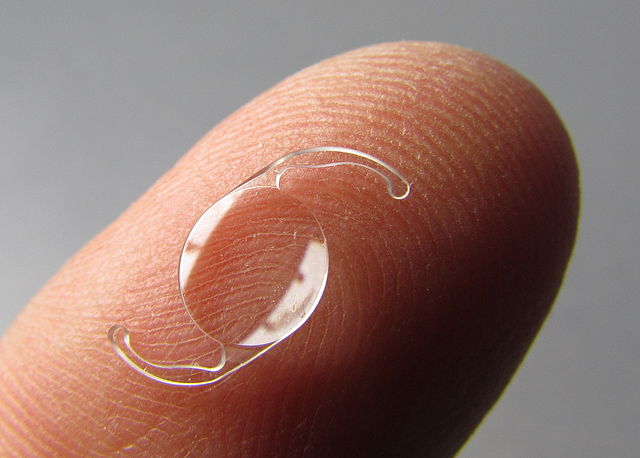In Phakic IOL surgery, surgeons implant an artificial lens into the eye while preserving the natural lens, unlike LASIK, which reshapes the cornea. This procedure appeals to individuals with high refractive errors or thin corneas, who may not meet the criteria for LASIK.

Benefits of Phakic IOL:
- High Refractive Error Correction: Phakic IOL is particularly effective in correcting high degrees of nearsightedness, farsightedness, and astigmatism, offering improved vision without reliance on glasses or contact lenses.
- Preservation of Corneal Integrity: Since Phakic IOL doesn’t involve reshaping the cornea, it’s an excellent choice for individuals with thin or irregular corneas, reducing the risk of complications associated with corneal procedures.
- Reversibility: Unlike some forms of refractive surgery, Phakic IOL is reversible. The surgeon can remove the lens if necessary, enabling the patient’s vision to return to its pre-surgery state.
- Quality of Vision: Many patients report high satisfaction with the quality of vision achieved through Phakic IOL, with minimal glare and halos compared to other procedures.
Procedure PHAKIC IOL:
3. Recovery: Most patients experience rapid visual recovery following Phakic IOL surgery, with minimal discomfort. However, it may take a few days to weeks for vision to stabilize completely.
PHAKIC IOL COST:
The cost of phakic intraocular lenses (IOLs) can vary depending on various factors such as the type of lens, the surgeon’s fees, the location of the procedure, and any additional pre-operative or post-operative care required.in vijayanethralaya eye hospital in bangalore in Dr.Appaji gowda is a surgeon in the phacoemulsification in bangalore city.
Considerations for Candidates:
- Age and Stability of Refraction: Candidates for Phakic IOL should be over 21 years old with stable refractive errors for at least one year.
- Individuals with thin corneas or other corneal abnormalities may find Phakic IOL more suitable than corneal-based procedures like LASIK.
- Eye Health: Candidates must have healthy eyes free from conditions such as glaucoma, cataracts, or retinal problems.
- Realistic Expectations: While Phakic IOL can significantly improve vision, candidates should have realistic expectations about the outcomes and potential risks of the procedure.
FAQ”S:
1.Manufacturers make most IOLs from silicone, acrylic, or other plastic compositions. They also coat them with a special material to actively protect your eyes from the sun’s harmful ultraviolet (UV) rays.
2Surgeons most commonly use a monofocal IOL lens for cataract surgery.It has one focusing distance.The setting is focused for up close, medium range, or distance vision.Most people have them set for clear distance vision. Then they wear eyeglasses for reading or close work.
3.Multifocal IOLs provide both distance and near focus at the same time. The lens has different zones set at different powers.
4.Toric IOLs astigmatism, there is an IOL called a toric lens. Astigmatism is a refractive error caused by an uneven curve in your cornea or lens. The toric lens is designed to correct that refractive error.
Author Details:
Dr. Sushruth Appajigowda holds a prominent position as a Cornea, Cataract, Glaucoma, and LASIK Surgeon in Bangalore. He serves as the chief Cataract and Refractive surgeon at Vijaya Nethralaya Eye Hospital, Nagarbhavi Bangalore. Renowned as one of the finest LASIK surgeons nationwide, he brings with him over 12+ years of experience across multiple LASIK platforms, including ZEISS, ALCON, SCHWIND, AMO, and Bausch and Lomb. Dr. Sushruth, a Certified Refractive Surgeon and Fellow of the All India Collegium of Ophthalmology, has successfully conducted over 5000 LASIK procedures.Furthermore, he stands as a distinguished speaker at various National and International Forums, using his expertise to guide you in selecting the most suitable procedure based on your health requirements.

http://vijayanethralaya.com/link-in-bio/
Conclusion:
Phakic IOL surgery represents a groundbreaking solution for individuals seeking freedom from glasses or contact lenses. With its precision, reversibility, and preservation of natural lens function, Phakic IOLs offer a safe and effective option for vision correction.










